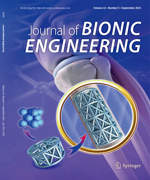Samples of pheromone lures used in boll weevil, Anthonomus grandis (Boheman), eradication programs are routinely analyzed by Gas Chromatography (GC) to ensure lures are adequately dosed with grandlure, the synthetic aggregation pheromone produced by male weevils. However, preparation of GC samples is tedious, time consuming, and requires a moderate level of experience. We examined the use of a commercially-available electronic nose (e-nose) for rapidly assessing the grandlure contents of lures. The e-nose was trained to recognize headspace collections of grandlure emitted from new lures and after lures were aged under field conditions for 4 d, 7 d, 10 d, and 14 d. Based on cross-validation of the training set, the e-nose was 82% accurate in discriminating among the different age classes of lures. Upon sampling headspace collections of pheromone from a different set of field-aged lures, the e-nose was <50% accurate in discriminating 4 d, 7 d, and 10 d aged lures from the other age classes of lures. However, the e-nose identified new and 14 d aged lure samples with 100% accuracy. In light of these findings, e-nose technology shows considerable promise as an alternative approach for rapidly assessing the initial grandlure contents of lures used in boll weevil eradication programs.

 Table of Content
Table of Content
 Table of Content
Table of Content